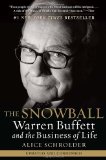Bonds: Why Bother?
Rob Arnott’s paper Bonds: Why Bother? sets out to succinctly punch a few holes in accepted market norms. What he finds should be sobering for investors in shares who believe that they can gain excess returns for taking the excess risk of holding equities over reasonable lengths of time.
Now a lot depends on your definition of a “reasonable length of time” but as the paper shows that someone holding and rolling over 20 year Treasury bonds would have beaten an investor in the S&P 500 over any time frame since 1979 you'd have to have a very long term view indeed to regard equity investment as a safe thing. In fact bonds have actually beaten equities on the same measure over the last forty years.
Rob Arnott’s paper Bonds: Why Bother? sets out to succinctly punch a few holes in accepted market norms. What he finds should be sobering for investors in shares who believe that they can gain excess returns for taking the excess risk of holding equities over reasonable lengths of time.
Now a lot depends on your definition of a “reasonable length of time” but as the paper shows that someone holding and rolling over 20 year Treasury bonds would have beaten an investor in the S&P 500 over any time frame since 1979 you'd have to have a very long term view indeed to regard equity investment as a safe thing. In fact bonds have actually beaten equities on the same measure over the last forty years.



